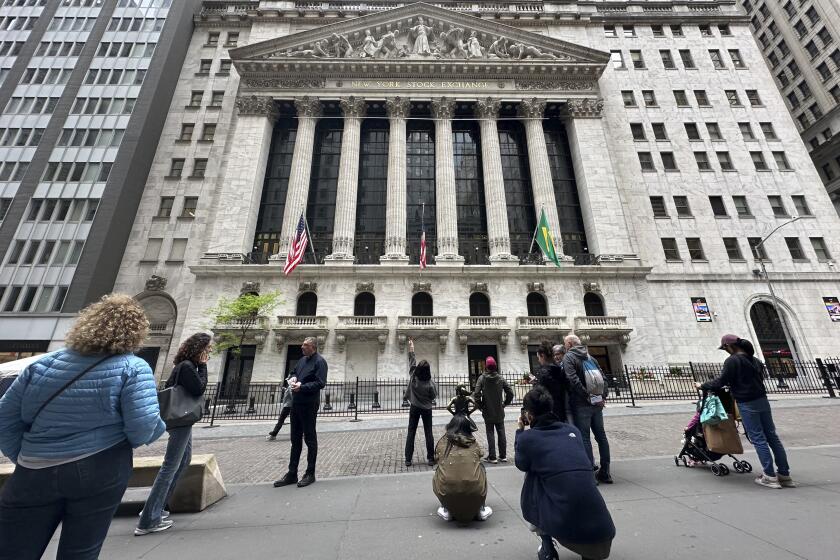Durable goods orders up in March
New orders for U.S.-made durable goods were surprisingly strong in March, the government reported Wednesday, but softer-than-forecast sales of new homes took the glow off a pickup in investment spending.
Separately, a Federal Reserve report released Wednesday showed that most parts of the country experienced moderate economic growth in the early spring despite sluggishness in the manufacturing sector largely because of the housing slump.
The Commerce Department said orders for durable goods such as new cars and refrigerators gained 3.4% to a seasonally adjusted $214.9 billion last month after a 2.4% increase in February. A key category within the report that measures business investment also rose strongly.
But a second report from the department showed sales of new homes rose 2.6% in March to an annual rate of 858,000, below forecasts for an 888,000-unit rate.
The inventory of completed but unsold homes climbed slightly to 545,000 from 544,000 in February, a hefty supply that analysts said would delay a recovery in the housing sector.
“I still believe that falling prices are needed to help clear out the excess supply, and without those declines, we could be in for a very long, slow adjustment period,” said economist Joel Naroff of Naroff Economic Advisors in Holland, Pa.
The monthly durable goods orders report is highly volatile but, nonetheless, the March rise handily surpassed Wall Street economists’ expectations for a 2.5% increase.
Non-defense capital goods excluding aircraft, a key component of the monthly report that serves as a proxy for business investment, posted a 4.7% increase in orders last month. It was the biggest increase since September 2004, when orders for those types of goods rose 7.9%, and came after declines of 2.3% in February and 6.2% in January.
Analysts called the pickup in non-defense orders encouraging since it could be a signal that companies see reasons to expand their operations, but they were cautious.
“This is a helpful sign for the economy,” said Kevin Flanagan, a fixed-income strategist for Morgan Stanley’s global wealth management unit based in Purchase, N.Y. “But it is too early to say whether or not capital expenditures are going to be back on the rebound just based on one month’s data.”
Economist Cliff Waldman of Manufacturers Alliance/MAPI in Arlington, Va., warned that the monthly durable goods data were too erratic to signal that business confidence had stabilized.
“The general economic outlook remains precarious,” Waldman said.
That impression was fortified later by the Federal Reserve’s periodic “beige book” survey of economic conditions around the country, covering from the end of February to mid-April. It said there was only “modest or moderate expansion in economic activity” and described manufacturing activity as slow.
The new-home sales data came a day after a real estate trade group reported that the sales pace of existing homes -- which represent 85% of the housing market -- slumped 8.4% in March from February, the biggest month-to-month decline in more than 18 years.
Other housing data Wednesday was slightly more upbeat. A Mortgage Bankers Assn. report showed U.S. mortgage applications rose last week after five straight declines as lower loan rates encouraged home purchases and refinancings.






